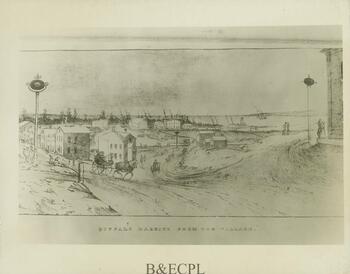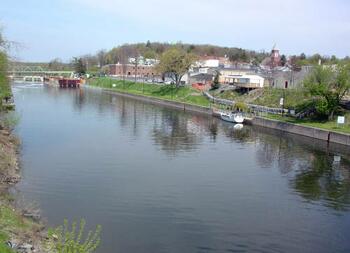At the eight-year-long bicentennial of the Erie Canal’s construction, the Canal’s historical impact is clear. By delivering immigrants to the vast West, the Erie Canal was a major force in the settlement of the United States. By connecting the resources of the Midwest to the Port of New York and beyond to global markets, the Erie Canal made the country rich. Built as a navigation system for commercial shipping, the Erie Canal attracted businesses along its banks. Today nearly eighty percent of Upstate New York’s population lives within twenty-five miles of the Erie Canal.
The Erie Canal forever changed the way Americans worked and lived. It connected previously disparate regions of the country and carried goods, people, and ideas across those regions. It set a precedent for government intervention in economic development and created the impetus for the very systems that caused its decline, like the railroads and the St. Lawrence Seaway. But most of all, the Erie Canal put New York on the map of American history, making the state the center of the country’s first major transportation system and the model for future infrastructure projects in the states and territories.
This illustration of Buffalo Harbor was presented to commemorate the completion of the Erie Canal in October 1825. Courtesy of Buffalo & Erie County Public Library via Western New York Library Resource Council and Empire State Digital Network.
This 2005 photograph shows the Barge Canal—which is often referred to as the Erie Canal—at Lyons, New York, about twenty miles east of Palmyra. One of the locks on the canal can be seen at the far left. The canal today is primarily used for recreational purposes. Courtesy of Brigham Young University - Harold B. Lee Library via Mountain West Digital Library.
These tips and guidelines provide an example of the need to balance the needs of commercial and private uses of the natural resources along the Erie Canal. Courtesy of New York State Library via Empire State Digital Network.

